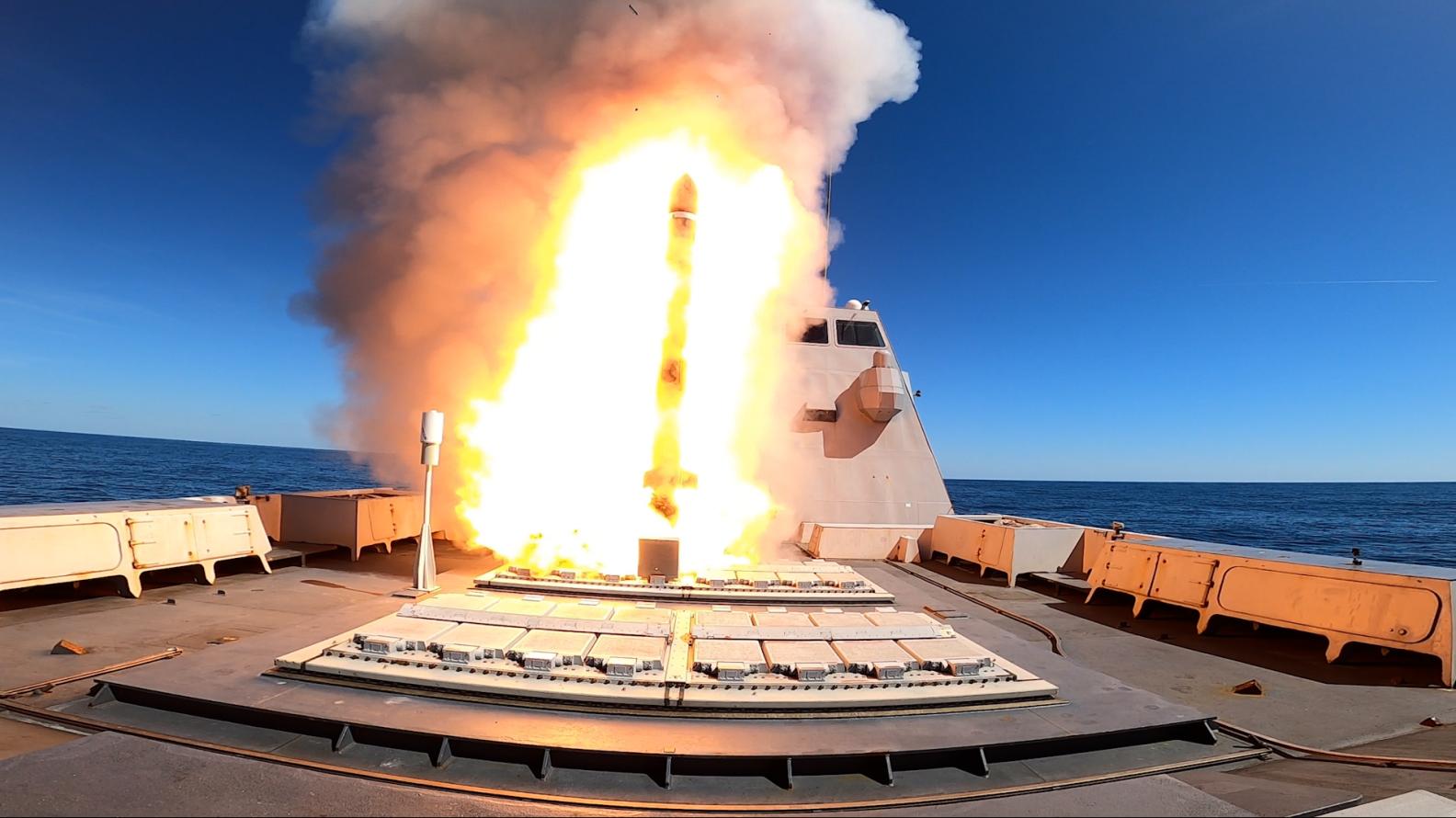The French Navy (Marine Nationale) recently conducted a synchronized land-attack cruise missile test on a single land target. In the first such live tactical test, the Navy was looking to overwhelm an adversary air defense system and destroy a ground installation.
The test involved an Aquitaine Multi-Mission Frigate (FREMM) positioned off the coast of Quimper in northwestern France and a Suffren-class nuclear attack submarine (SSN) off the coast of Biscarrosse in the southwest, simultaneously firing the Naval Cruise Missile (MdCN) at a target.
The target was successfully hit, with the DGA (Direction générale de l’armement, which prepares the future of French defense systems) declaring in a statement that the “shot reached in synchronization,” illustrating the “capabilities of the French Navy.”
Double Kill With Ship-Launched Land-Strike Missile
The test was conducted to “strengthen the French Navy’s operational know-how” in “human and material conditions identical to those encountered in operation.”
This suggests a realistic combat training scenario where the missile and target reconnaissance crews must have assumed enemy radar surveillance that could identify and detect the MdCN missile and electronic warfare (EW) jamming to disrupt the guidance link from the launch platforms.
“The French Navy thus demonstrates its ability to synchronize strikes against land, from different units, and on a single target. The DGA missile testing and expertise center site ensured the coordination and overall conduct of the firing, as well as the safety of property and people,” the statement added.
While it is unclear if target reconnaissance and tracking were undertaken using other aerial and space assets like surveillance drones, maritime patrol aircraft, or satellites, a certain degree of coordination and communication between the submarine and the FREMM frigate cannot be ruled out either.

French Navy vessels can thus strike targets of major interest from a long distance and with selective precision. “This action makes it possible to pose a military threat from the first moments of a crisis, thus influencing competitors’ will. The tactical and technical lessons of this firing will contribute to developing the combat skills of the French Navy, always engaged in high-intensity preparation,” the statement added.
The framing and description indicate that the purpose was most likely to validate basic tactics, coordination procedures, and launch sequences for the missile for sea-fired land attacks. Russia has been undertaking a long-range standoff strike in Ukraine since the beginning of the war in February 2022.
Is Russia The Target?
Russia fires missiles like the Kh-101 air-launched cruise missile (ALCM) from Tu-95 and Tu-160 strategic bombers, the Iskander ballistic missiles from land, and the Kalibr sea-launched cruise missile from its warships and missile boats.
These periodic missile barrages deep into Ukrainian cities on military and civilian-military targets are coordinated among the various assets across timing and sequence.
These repeated strikes have expended Ukraine’s costly US and European air defense systems, such as the Patriot PAC-3, Norwegian Advanced Surface-to-Air Missile System (NASAMS), or the German IRIS-T, despite Kyiv’s military sometimes scoring 100 percent shoot-downs.
The missiles came from the NATO (North Atlantic Treaty Organization) countries’ armories and were not manufactured in Ukraine, making replenishment difficult.
While the country or the theater of operations against which France envisages such a capability is unclear, the closest region presenting such a scenario could be the Baltic Sea. The water body has been witnessing intensifying tensions with Russian live-fire exercises from and around its exclave of Kaliningrad and consistent drills by NATO forces.
In September 2023, NATO held the two-week Northern Coasts exercise, with France participating alongside Sweden, non-Baltic states, Belgium, the US, Canada, and the Netherlands.
“They will practice amphibious operations and strikes from sea to land,” Reuters said in the run-up to the exercise. What assets and equipment France contributed to these drills is not known. However, the latest drill off the French coast was nevertheless aimed at refining its capability to undertake “coordinated” “land in-depth” strikes on a “single target.”
The MdCN Cruise Missile
The MdCN is France’s equivalent to the US-made Tomahawk and was developed by pan-European missile maker MBDA following a contract in 2006. The naval cruise missile entered service in 2017 and was used operationally by France for the first time in strikes against Syria in 2018.
The missile has been designed for vertical launch from the compact A70 SYLVER vertical launcher, which can also house other MBDA missiles, such as the ASTER family of air defense missiles.
It has been designed to be launched from the 21-inch torpedo tubes of a submerged submarine, much like the Russian Klub (Kalibr-K) cruise missile.
The missile must likely have been pre-programmed to perform trajectory and direction-changing maneuvers to make it harder to be shot down by air defense missiles.
It weighs 1,400 kg, is 6.5 meters long, travels at high subsonic speed, and has a range of 1,400 km when launched from a ship and roughly 1000 km if released from a submarine. It is powered by Safran’s Microturbo TR 50 engine.
- The author can be reached at satamp@gmail.com
- Follow EurAsian Times on Google News